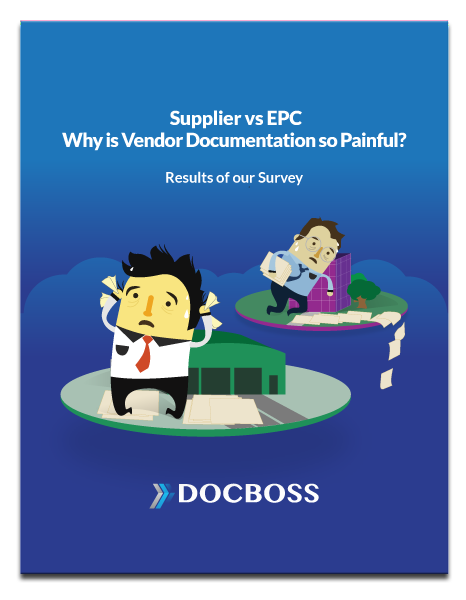
Document control training from Mireaux Management Solutions
Mireaux Management Solutions is a Houston-based company that offers a wide variety of training services including 3 document control-specific training…

An increase in the amount and customization of engineering documentation provided to customers at the end of projects correspondingly increases the time and work involved to produce it.
It can also increase documentation mistakes which leads to more documents being rejected by your customers and thus even more time and work spent to correct it and submit it properly.
From our recent survey entitled Supplier vs EPC, Why is Vendor Documentation so Painful? it may also increase the cost(s) of providing this documentation in more ways than you might think:
The frustration (and additional cost) arrives when each and every minor mistake/variation trigger the document rejection / resubmission process. A lack of empowerment at the document control function leads to frustration in the supplier community. Further, once a working relationship is established, the high turnover within the EPC document control function forces suppliers to revisit every hard won concession agreed by their previous contact.
With the volume of digitally stored data involved with most projects, information management is a necessary and critical competency. New documents and data being input into the systems must be properly categorized and managed, such that it can flow out to the end user plant operations on turnover. Less time is available to verify and interpret data received, so the suppliers are being asked (forced?) to pre-process information to suit the EPC input requirements.
 Add that to the fact that our survey showed that only 2% of process equipment suppliers have an Electronic Document Management System (EDMS) in place, this means that this work is largely being done manually which tends to lead to even more time spent on documentation and more mistakes to correct.
Add that to the fact that our survey showed that only 2% of process equipment suppliers have an Electronic Document Management System (EDMS) in place, this means that this work is largely being done manually which tends to lead to even more time spent on documentation and more mistakes to correct.
We also found in our survey that more than 80% of EPC survey respondents stated that data validation and correct formatting are the most important factors for successful supplier document management. In other words, your customers expect that you will deliver high quality documentation something that is greatly reduced when documentation work is done manually.
With this in mind, why would you continue doing documentation manually when the results show that it’s not in the best interest of either you or your customers?
DocBoss is the only true document control system for
suppliers. Book a quick demo to see how we help process
equipment suppliers make more profit with less pain.